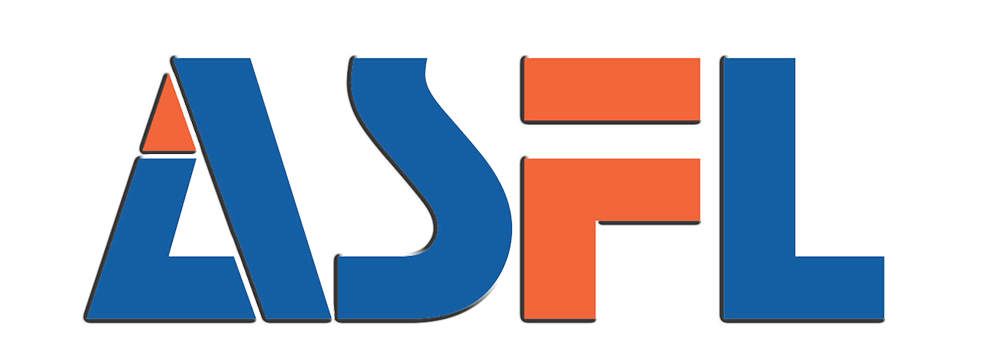Understanding Total Cost of Ownership for Water Filling Machines
Initial Investment vs. Long-Term Value of Water Filling Machines
Water filling machines that are automated do come with a hefty price tag at first glance. We're talking around 35 to 45 percent of what it will cost to own one overall. But these systems pay off in the long run because they cut down on labor costs and can handle bigger production volumes as needed. A recent look at the industry from 2024 shows something interesting too. Operational expenses actually account for about 60% of all costs when looking at a ten year period. This makes it pretty clear why manufacturers should focus on getting machines that last longer and have good automation features if they want their return on investment to be worthwhile.
Key Cost Drivers in Liquid Filling Machine Procurement
Four primary factors shape procurement decisions:
- Automation level: Semi-automatic systems cost 40% less than fully automated lines
- Production capacity: High-speed models (12,000 bottles/hour) double energy use compared to mid-range units
- Material compatibility: Stainless steel components increase initial costs by 25% but reduce maintenance frequency
- Regulatory compliance: NSF-certified systems add 15–20% to baseline pricing
These variables directly influence both initial budgeting and long-term operational efficiency.
Equipment Configuration and Scalability for Water Filling Systems
Modular designs allow facilities to scale output from 5,000 to 50,000 bottles per day without replacing entire systems. Operators using expandable filling heads report 30% lower capital expenditures over five years compared to fixed configurations, making modularity a strategic advantage for growing operations.
Critical Factors in Evaluating a Water Filling Machine Investment
Durability and efficiency vary significantly between models:
| Metric | Low-Cost Model | Premium Model |
|---|---|---|
| Mean Time Between Failures | 1,200 hours | 4,500 hours |
| Energy Consumption | 18 kW/h | 9.5 kW/h |
| Production Yield | 89% | 99.2% |
Facilities targeting 95%+ uptime should allocate 20–25% of their budget to preventative maintenance programs, which extend equipment life and minimize unplanned downtime.
Small-Scale Plants: Balancing High Upfront Costs with Uncertain Returns
New businesses making under 2,000 bottles each day often find themselves waiting over three years before seeing returns on investment. But there's another way forward. Going for partial automation makes sense here. For instance, pairing semi automatic filling machines with fully automatic cappers cuts startup expenses around 40 percent without sacrificing much productivity either we're talking about keeping about 85% of what full automation would deliver. Looking at actual examples from developing regions, companies adopting this mixed approach typically reach their break even point nearly 14 months sooner than those who go all in on complete automation right from the start. Makes sense when considering cash flow constraints for smaller operations just getting off the ground.
Source: Operational benchmarks derived from 2024 Beverage Production Economics Report
Calculating Payback Period and Return on Investment in Bottled Water Production
Investment Return Timeline for Water Bottling Operations
For mid sized businesses, getting their money back usually takes between twelve and twenty four months, though this varies quite a bit based on how much they produce and what prices are doing in the market right now. Let's take a look at the math behind it all. If someone invests $200k in equipment and saves around $150k each year from those investments, then simple division tells us they'll break even after just over one year. Now consider bottle manufacturing plants running at ten thousand units per hour. When these facilities switch to fully automated production lines, they tend to cut down on labor expenses by roughly forty percent. That kind of efficiency boost can shave anywhere from four to six months off the time needed to recoup initial investments compared to older semi automatic systems still in operation across many industries today.
Profit Margins in the Bottled Water Business
The average EBIT margin in bottled water production ranges from 14% to 18% (Beverage Marketing Corporation 2023). Automation boosts margins by 3–5 percentage points through labor efficiency, while energy-efficient machines reduce operating costs by $0.02–$0.05 per case. Modular systems also enable 12% faster scalability, a critical advantage in seasonal markets.
Case Study: ROI Performance of a Mid-Sized Plant in Southeast Asia
A Philippine bottling facility upgraded to a 20-valve rotary water filling machine in 2022 and achieved full ROI in 14 months:
| Metric | Pre-Automation | Post-Automation |
|---|---|---|
| Output Capacity | 8,000 BPH | 18,000 BPH |
| Labor Cost/Case | $0.18 | $0.09 |
| Energy Cost Savings | – | 22% |
The $325,000 investment increased annual net profits by $240,000 through higher throughput and reduced waste. By integrating energy monitoring systems to optimize compressed air usage, the plant cut energy expenses by $28,000 annually. Similar ROI patterns are emerging across Vietnam and Indonesia, where automated systems help manufacturers capitalize on 9% annual market growth.
Operational and Maintenance Costs Impacting Economic Viability
Breakdown of operational expenses: energy, labor, materials, and overhead
Operational costs fall into four main categories: energy (38–42%), labor (25–30%), packaging materials (18–22%), and facility overhead (10–15%). Modern rotary fillers consume 15–25% less energy than older linear models, while automation reduces labor needs by 40–60%. Bulk purchasing agreements typically lower packaging material costs by 12–18% annually.
Maintenance demands and durability of water filling machines
High-speed machines (10,000+ bottles/hour) require 3–5 times more frequent maintenance than standard models (6,000 bottles/hour). Maintenance accounts for up to 40% of operational budgets in large-scale plants, primarily due to seal replacements and conveyor adjustments. Stainless steel components extend machine lifespan by 30–40% compared to aluminum alloys, justifying their higher initial cost.
Energy consumption trends in automated filling systems
Servo-driven filling systems reduce energy use by 22–28% compared to traditional pneumatic models, with ROI achieved in 18–24 months through utility savings. Although energy-efficient compressors and variable frequency drives add 15–20% to upfront costs, industry data shows a 9% annual decline in per-liter energy costs since 2020 for plants using smart automation.
Industry challenge: High-efficiency machines and increased maintenance complexity
Modern machines achieve 98% filler accuracy—up from 92% in older models—but their advanced sensors and programmable logic controllers require specialized technicians. Facilities report 25–40% longer diagnostic times for automated systems, creating a tradeoff: energy savings of $18,000/year may be partially offset by $12,000 in additional maintenance labor.
Labor Cost Reduction and Productivity Gains Through Automation
How Automation Reduces Labor Costs in Water Filling Operations
Labor is the largest expense in most bottling facilities. Automation reduces workforce requirements by 40–60% in high-volume plants by eliminating manual tasks like bottle handling, lid placement, and quality checks. A 2023 Boston Consulting Group study found that automated lines cut labor costs by 33% while increasing throughput by 30% through continuous 24/7 operation.
Efficiency and Output Improvements with Automatic Water Filling Machines
Automated systems maintain 95–98% operational uptime, far exceeding the 70–80% typical of manual lines. This reliability enables smaller plants to consistently produce 12,000–18,000 bottles per hour, removing bottlenecks in rinsing and capping stages traditionally constrained by human pacing.
Maximizing Production Capacity and Throughput
Scalable configurations allow facilities to adjust line speeds from 8,000 to 36,000 bottles/hour without hiring additional staff. Modular automation strategies—such as starting with automatic rotary fillers—often yield 50% capacity gains within six months.
Case Study: Labor Savings After Automation in a Nigerian Bottling Facility
A manufacturing facility located in Lagos recently switched to a semi automatic water filling system and saw their staff numbers drop dramatically from around 120 down to just 55 people handling operations. The company spent about $380k upfront on this new equipment but started saving money almost immediately. They're now saving roughly $18,500 each month on labor costs alone, which means they recovered their entire investment within 22 months. Looking at the bigger picture, these savings amount to over half of what they used to spend on wages before going automated. This makes sense given that labor expenses across many areas continue climbing at around 14% per year according to IBWA figures from last year. For businesses trying to stay competitive while planning for growth, investing in such automation solutions seems increasingly necessary these days.
Strategies to Maximize ROI and Long-Term Cost Savings
Proven tips for maximizing ROI on water filling machine investments
Strategic procurement—such as bundling spare parts with initial purchases—can reduce long-term maintenance expenses. Phased automation spreads capital outlays and allows teams to optimize workflows incrementally. Predictive maintenance programs extend machine lifespans by 40% compared to reactive repairs (Ponemon 2023), delivering sustained cost savings.
Aligning production scale with market demand
Modular systems support flexible scaling via bolt-on components like secondary rinsers or labelers. This adaptability prevents overinvestment, a key benefit in volatile markets where demand fluctuates by more than 25% annually.
Adopting energy-efficient technologies for sustainable savings
Variable frequency drives (VFDs) reduce energy consumption by 18–30% during partial-load operations. Advanced designs incorporating heat recovery now achieve less than 0.15 kWh per liter bottled, meeting upcoming 2025 efficiency benchmarks.
Future trends: Shift toward low-energy, high-efficiency models in emerging markets
Bottlers in Southeast Asia and Africa are increasingly adopting solar-powered filling machines with battery storage. These systems eliminate grid dependency while maintaining 94% uptime and achieving ROI within 26 months—despite 12% higher initial costs—through fuel savings and available tax incentives.
FAQ Section
What factors influence the total cost of ownership for water filling machines?
The total cost of ownership is influenced by factors such as initial investment, automation level, production capacity, material compatibility, and regulatory compliance.
How can businesses maximize ROI when investing in water filling machines?
Businesses can maximize ROI by strategic procurement, phased automation, predictive maintenance programs, and adopting energy-efficient technologies.
Why is automation crucial in water filling operations?
Automation is crucial as it reduces labor costs, increases productivity, and ensures higher operational uptime, making operations more efficient.
Table of Contents
-
Understanding Total Cost of Ownership for Water Filling Machines
- Initial Investment vs. Long-Term Value of Water Filling Machines
- Key Cost Drivers in Liquid Filling Machine Procurement
- Equipment Configuration and Scalability for Water Filling Systems
- Critical Factors in Evaluating a Water Filling Machine Investment
- Small-Scale Plants: Balancing High Upfront Costs with Uncertain Returns
- Calculating Payback Period and Return on Investment in Bottled Water Production
- Operational and Maintenance Costs Impacting Economic Viability
- Labor Cost Reduction and Productivity Gains Through Automation
- Strategies to Maximize ROI and Long-Term Cost Savings
- FAQ Section





